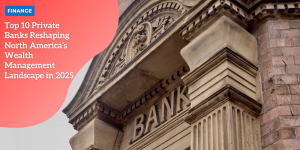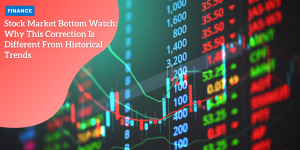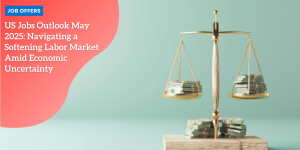ADP National Employment Report: US Private Sector Jobs Surge Past Analyst Forecasts in March

March Employment Figures Exceed Expectations
The ADP National Employment Report for March brought some positive news for the U.S. labor market.
Anúncios
The private sector added 155,000 jobs, significantly surpassing analysts’ predictions of 115,000.
This upturn marks a substantial improvement from February’s revised figure of 84,000 jobs.
Indicators of Positive Momentum
The creation of 155,000 jobs in March, cited in the ADP Report developed with Stanford’s Digital Economy Lab, indicates positive momentum in the labor market.
Anúncios
This surge has outpaced previous expectations and reflects a notable uptick from the earlier month’s employment data.
The ADP Report is particularly regarded as a reliable preview of more detailed labor market statistics to be subsequently released by the Department of Labor.
Although the ADP and government reports are independent of each other, the former often provides valuable preliminary insights into the state of employment.
Anúncios
Private Sector Gains
The gains in March can be attributed to several sectors within the private domain.
The consistent job growth signals that businesses are still actively expanding their workforce, despite looming market uncertainties and policy shifts.
These developments are noteworthy because they highlight an underlying strength in the job market that could bolster economic confidence in the near term.
Broader Economic Context
While the March surge is encouraging, it exists within a broader economic context marked by decelerating trends.
Tariff announcements since January have triggered anxiety over future job demand, as businesses navigate the implications of potential cost increases and supply chain disruptions.
Compounding this scenario are significant government spending cuts leading to layoffs of federal employees, which could exert downward pressure on overall job figures.
Conclusion
Despite these broader challenges, the job figures for March offer encouraging signs of resilience within the private sector.
The uptick in employment may help mitigate some concerns over impending economic uncertainties, and it underscores the importance of tracking ongoing trends and policy outcomes closely in the months ahead.
As upcoming data emerges, it will be critical to continue monitoring how these broader dynamics shape the economic landscape.
| 📌 Factor | Current Situation | Potential Impact |
|---|---|---|
| 📈 Job Growth | 155,000 private sector jobs added in March | Signs of deceleration despite surpassing forecasts |
| 🔧 Tariffs | New tariffs introduced to boost U.S. industry | Could reduce job demand and hurt hiring plans |
| 💼 Government Cuts | Thousands of federal employee layoffs | Increased economic instability and reduced spending |
| 📉 Confidence | Business and consumer confidence declining | Could lead to lower investment and consumption |
| 🔮 Economic Outlook | Mixed signals from recent labor reports | Growing concerns about potential recession |
Economic Policy Impact
Tariff Announcements and Their Rationale
The Trump administration has proposed a series of global tariffs, which have been announced periodically since January, in an effort to bolster the U.S. economy.
These tariffs are seen as a tool to increase federal revenue, compensating for the promised tax cuts and attempting to rejuvenate the long-declining industrial base of the United States.
The idea is to protect domestic industries from foreign competition, encouraging companies to produce goods domestically, thereby preserving and potentially creating jobs in the manufacturing sector.
Declining Business and Consumer Confidence
Despite the administration’s intentions, the business community and consumers have shown signs of skepticism and concern.
The uncertainty surrounding these tariffs and their long-term impacts has led to a noticeable decline in confidence among both businesses and consumers.
This decline can be attributed to the unpredictability of the tariffs’ effects on trade and the overall economy, causing businesses to hesitate in making significant investments and consumers to reduce spending on goods and services.
Investment and Spending Patterns
The policy uncertainty has broader implications for the patterns of investment and consumer spending.
Businesses, facing potential disruptions in the supply chain and increased costs for imported materials, may delay or scale back their investment plans.
This caution can result in slower economic growth, as reduced investment limits the expansion of production capacity and innovation.
Similarly, consumers, worried about potential price increases and economic instability, may become more conservative in their spending habits, affecting industries reliant on consumer demand.
Government Spending Cuts
Compounding these issues are extensive government spending cuts, which have resulted in the layoffs of thousands of federal employees.
These cuts not only directly impact the livelihoods of those affected but also lead to reduced consumer spending and demand in the economy.
The combination of tariff-related uncertainties and government layoffs creates a challenging environment for economic stability and growth.
Economic Stability and Recession Risks
Economists are increasingly concerned about the heightened probability of a recession within the next 12 months, a significant shift from earlier, more optimistic forecasts.
The potential erosion of job demand due to tariff impacts and spending cuts poses a real threat to the stability of the labor market and the broader economy.
Continuous monitoring of employment trends and key economic indicators will be crucial in navigating these uncertain times.
The economic landscape remains precarious, and the policies in place require close observation to fully understand their long-term consequences.
As the situation evolves, it becomes increasingly important to consider how these factors will shape future economic trajectories and the overall stability of the U.S. economy.
Future Economic Outlook
Rising Recession Concerns
The recent job figures may have lifted some spirits, but the looming specter of a potential recession casts a long shadow over economic forecasts.
With economists perceiving a higher probability of a downturn within the next year compared to earlier estimates, there’s a heightened sense of vigilance surrounding the economic stability in the United States.
The optimism sparked by the increase in job numbers is tempered by the realization that broader economic conditions are in flux, driven by both domestic policy decisions and global economic shifts.
The Role of Economic Policy Changes
Several factors contribute to the growing uncertainty in the economic landscape.
President Trump’s proposed global tariffs, designed to boost revenue and revitalize the US industrial base, are at the center of this complex scenario.
While the intent behind these tariffs is to protect and nurture domestic industries, their implementation has disrupted market dynamics and created ripples of uncertainty across the economy.
Businesses and consumers alike are responding with caution, as confidence wanes and the prospect of decreased investment and spending looms large.
Market Responses and Economic Stability
The policies set in motion earlier this year, coupled with government spending cuts leading to federal layoffs, are influencing market responses in unpredictable ways.
These elements, combined with the anticipated tariff effects, pose challenges for healthy economic growth.
As companies and consumers reassess their financial plans, the ripple effects could contribute to a slowdown in economic activity, heightening the risks of a recession.

Navigating an Uncertain Future
To mitigate these uncertainties, it is crucial to maintain a vigilant eye on employment trends and economic indicators.
Economic stakeholders—including policymakers, businesses, and consumers—must collaborate to build adaptive strategies that could cushion potential negative impacts.
By navigating this intricate landscape carefully, the economy might yet find a stable footing despite prevailing uncertainties.
Given these circumstances, it’s essential to continually evaluate and interpret the evolving economic signs, ensuring readiness to address any adverse shifts in the economic climate.
Through understanding, adjustment, and action, the pathway to economic recovery and stability can be charted successfully.





